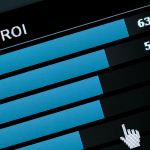Grow your sales with customer attention
A conversion takes about eight touches* typically before occurring. A buyer needs to interact with your brand whether it’s through an email, ad, phone call, or some other form before they are convinced enough to make a conversion. You can grow your sales by learning how to more effectively capture your customer’s attention.
Key points:
- The definition of attention has several layers
- Short content doesn’t always been the best content
- Creativity and emotions play important roles in engaging audiences
Defining attention
We’ve talked about attention a few times on the Emotiva blog, but it’s such an important fundamental aspect of sales and marketing that’s worth revisiting. Attention encompasses three layers:
- Attention
- Attention span
- Engagement
Attention, more specifically active attention, represents the moment an audience member notices you, their eyes and ears are drawn to whatever it is that you are presenting to them.
But attention is fleeting, lasting just seconds. As such, attention span represents an additional layer which tells how long you can hold that audience member’s attention before they turn to something else. Finally, active attention, in the context of making a sale, leads to high engagement, which will likely result in a favorable action such as buying a product or signing up for more information.
Three ways to capture customer attention
1. Understand the concept of the attention economy
In a past blog, we talked about the attention economy and how uninterested buyers will move their attention to something else after three seconds. The attention economy refers to considering attention as a currency. It means that attention has an economic conversion to money that is critical when planning media channels because it takes the differential between the potential reach and the actual attention of a piece of marketing content.
In the early stages of a buyer’s journey, a buyer will interact with several brands through different channels.
2. Try different types of touches or content
Short content does not necessarily mean better content. In fact, some studies show that ad recall remains up to five times longer in the target’s mind when they emerge on long content platforms. We talk about this more in our white paper.
Attention levels differ depending on the platform. Viewers are more likely to watch TV ads than social media ads:
| Ad Media Type | Average Ad Watch Time | Average Time Attention is Held |
| TV | 30 seconds | 13.8 seconds |
| YouTube | 15 seconds | 5 seconds |
| Facebook/Instagram | 15 seconds | 1.5 seconds |
Try mixing up short and long form content such as blog posts, videos, and short animated posts.
3. Use emotion to capture and sustain attention
Emotional content leaves a lasting impression on an audience, producing twice as many positive results in marketing campaigns than rational content. However, the emotional activation depends on one important thing: whether the subject is paying attention or not. Some studies show how emotions and attention are linked, where subjects given a task might change their attention away if something in their external environment is more exciting or engaging.
Want to see how emotions trigger attention in action? Check out how NeN identified the top video ad most likely to draw in the crowd based on emotional reactions and attentional measurement.
How to measure customer attention
Measuring customer attention depends on several factors. Traditional metrics such as video views, impressions, and CTA clicks help to tell part of the story. But to really understand your audience members, you have to know what catches their attention and why they continue to hold their attention on your media.
Tools such as artificial intelligence can be combined with other physical elements such as eye tracking, head movements, and facial microexpressions to provide effective attention measurement. Marketing teams can collect all this data from various audience members to help direct marketing campaigns in the right direction, which will lead to more sales.
Interested in learning more? We talk about how to improve your customer attention in our white paper.
*Source:
DOWNLOAD YOUR FREE WHITE PAPER


































